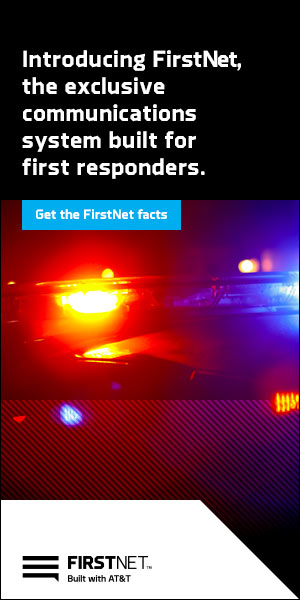By James Careless
We live in a connected world — one where connected devices such as in-car monitoring services, medical wearables and smartwatches can transmit invaluable data about the users’ specific locations and physical well-being to third-party sites. At the same time, the data being provided by wireless calls via 911 to Emergency Communication Centers (ECCs) lacks the precise locational information provided by old-fashioned landline phones to 911 call takers. That’s why providing ECCs with connected device data can fill the gaps left by wireless phones, enabling faster and more accurate police/fire/EMS responses by 911.
Providing this life-saving additional data to ECCs is the mission of RapidSOS (RapidSOS.com). Founded in 2012 by Michael Martin and Nicholas Horelik, the company’s creation was spurred by Martin’s father’s inability to connect with 911 assistance through his cell phone after falling off a roof in rural Rockport, Indiana and seriously injuring himself. (Help only arrived after Martin’s mother came home, found her husband lying outside in freezing temperatures, and called 911 using the home’s landline.) Had RapidSOS been in existence when this accident occurred, the mobile location data on Martin’s father’s cellphone could have been forwarded to his local ECC, allowing them to pinpoint his location when he called for help and dispatch assistance promptly.
“Today, over 80% of all 911 calls are made from mobile phones,” said Edward Parkinson, RapidSOS’ President of Public Sector. (Prior to taking this position, Parkinson was the CEO of the FirstNet Authority.) “And now we are on the cusp of 5G wireless and automated Emergency Alerts being sent automatically to ECCs by connected Internet of Things (IoT) devices without humans even directly calling 911. So the world needs an emergency response platform that sends this data directly to ECCs along with 911 voice calls – and RapidSOS is it.”
Practically speaking, this is true. This is why In partnership with more than 90 brands including Apple and Uber, RapidSOS provides location data to 5,300 ECCs through separate web-connected displays on their 911 call takers’ desktops. While emergency support is on the line with a 911 caller, RapidSOS can provide emergency response teams with location data from the caller’s smartphone.
If the caller is trapped in a commercial building, then RapidSOS can provide the ECC with building plans through partnerships with companies such as CRG. Furthermore, If the caller has a RapidSOS Ready medical wearable, then their medical history is available to the ECC and first responders who attend the scene, including any allergies to medications and pre-existing conditions. The RapidSOS Platform can also share other useful information with ECCs, such as reports of gunshots in the area as well as bystander photos, texts, and videos.
A Wide Range of Sources
The data that RapidSOS shares with ECCs comes from 400 million+ linked devices including mobile phones, wearable devices, and more. Through this extensive network of digital devices, RapidSOS is able to provide ECCs with a wide array of caller data including their location, health and medical information, and even local connected building and alarm data.
For instance,RapidSOS can obtain rich data from ride-sharing services in the instance of an emergency and relay that information to ECCs. “Uber partnered with us in 2018,” said Karin Marquez, RapidSOS’ Chief Public Safety Brand Manager. “They have a Safety Toolkit icon in their app that the driver and/or passenger can click on to send emergency information about the vehicle’s location, make, model, color, and license plate number, plus the caller’s name and phone number. We can relay this data to our ECCs.”
Meanwhile, the UK company What3Words (what3words.com) has devised a way to map the planet as 3 square meter boxes and labeled each of these boxes with unique three-word names. “By integrating this data into the RapidSOS platform, our service can give any ECC access to accurate location information,” Parkinson said. “This makes it easy for rescuers operating in the most remote areas to find and help people in distress.”
RapidSOS in Action
Nonie McCandless is a Supervisor at Douglas County 911 Emergency Services in Minden, Nevada. Her ECC has been a RapidSOS user for a few years now, and McCandless is very satisfied with the results.
“I have yet to see RapidSOS give me wrong information,” said McCandless. “As well, when a cell phone user calls us, the location information provided by their wireless carrier is typically within a hundred meters of the latitude and longitude that comes in. But whenever you check the call using RapidSOS, it will plot the call’s origin right on top of the caller’s residence, location or intersection that they’re at.”
A case in point: “My director told me about a recent 911 case where the caller had gone off the highway in a rural area in Alpine County, and was totally lost,” she said. “Our people were able to find them precisely using the latitude and longitude coordinates provided by RapidSOS. That wouldn’t happen with cellphone data alone”
RapidSOS’ informational ebook, “How Emergency Intelligence Data Empowers Public Safety” (available for free download at rapidsos.com), tells similar stories of fast remote rescues. They include a confused elderly man in Kirkwood, Missouri who called the ECC for help without knowing where he was. RapidSOS found him and gave first responders the man’s age, address, medical conditions, medications, emergency contacts, and doctor’s information.
Meanwhile, in Greenup County, Kentucky, a bike rider was knocked unconscious after falling from his bike. Fortunately, his wearable device detected the fall and called for help. RapidSOS’ capture and relay of this information to the nearest ECC ensured that medical help was dispatched promptly to the biker’s location. According to Bufrd Hurley, Director of Greenup County E-911, “it saved his life because the trauma caused a brain bleed, and he could have died.”
Again all of this information is available to ECCs via RapidSOS and its partner network. “It’s really easy to use and our call takers just log onto it using a web browser; there’s no software to install or anything else,” said McCandless. “RapidSOS also provided free training to our people to get them up to speed, so the process was affordable and painless.
The Bottom Line
In a world where fewer and fewer 911 calls come from landlines, RapidSOS makes it possible for ECCs to provide faster and more effective assistance to everyone who asks for help.
“I think everyone should have RapidSOS,” concluded Nonie McCandless. “It saves time searching for vital information, and it saves lives as a result.”


